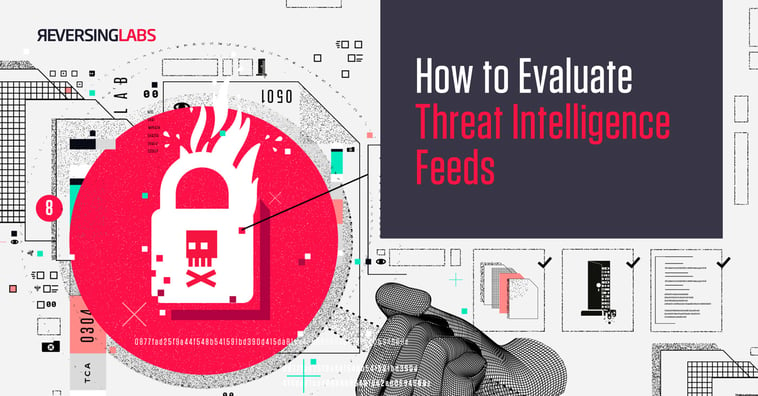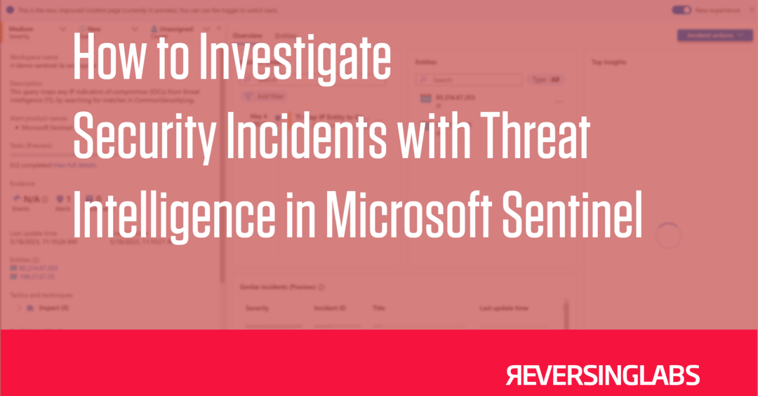VIDEO
eBook

How to Evaluate Threat Intelligence Feeds
Download guideGUIDE

Threat intelligence, often called cyber threat intelligence, collects, analyzes, and interprets data and information about potential cyber threats. This data encompasses many sources, including malware reports, hacker forums, and network logs. The goal is to gain insights into current and emerging cyber threats to better defend against them.
In today's digital landscape, organizations are constantly threatened by cybercriminals, state-sponsored actors, and hacktivists.
Understanding threat intelligence is crucial for several reasons:
Proactive defense: Threat intelligence enables organizations to anticipate and prepare for potential threats before they materialize, allowing them to stay one step ahead of cyber attackers.
Risk reduction: By understanding the evolving threat landscape, organizations can implement targeted security measures to reduce their risk of being breached.
Resource optimization: It helps allocate security resources more efficiently by focusing on the most relevant and high-priority threats.
Compliance: Compliance with various cybersecurity regulations often requires organizations to have a robust threat intelligence program.
Network security - Network security protects an organization's digital infrastructure and data by identifying and countering threats. This entails monitoring network traffic, detecting abnormal patterns, and swiftly responding to security breaches. The goal is to defend against external attacks and prevent unauthorized access and data exfiltration within the network. By employing threat intelligence, organizations gain a deeper understanding of the evolving threat landscape, enabling them to fortify their network defenses effectively.
Endpoint security - Endpoint security is all about safeguarding individual devices like computers and smartphones from many threats, including malware, ransomware, and phishing attacks. It entails deploying antivirus software, intrusion detection systems, and endpoint protection platforms that leverage threat intelligence to detect and mitigate threats in real-time. By incorporating threat intelligence into endpoint security, organizations can proactively identify and neutralize malicious activities before they can compromise devices and data.
Incident response - Incident response is a critical facet of cybersecurity, and Threat Intelligence plays a pivotal role in streamlining this process. It involves swiftly identifying, containing, and eradicating security incidents such as data breaches or malware infections. With real-time threat data at their disposal, security teams can respond more efficiently, reducing the impact of security incidents and minimizing downtime. Threat Intelligence empowers organizations to make informed decisions during the incident response phase, leading to a more coordinated and effective response effort.
Vulnerability management - Vulnerability management is centered around identifying and addressing vulnerabilities within an organization's software, systems, and applications before malicious actors can exploit them. Threat intelligence contributes by providing insights into emerging threats and the likelihood of exploitation. This enables organizations to prioritize vulnerability remediation efforts based on real-world risks, ensuring critical vulnerabilities are patched promptly and reducing the attack surface.
Fraud prevention - Fraud prevention encompasses detecting and preventing fraudulent activities and financial crimes, which can have severe financial repercussions for organizations. Threat intelligence aids in this endeavor by offering insights into the tactics and techniques used by cybercriminals for fraud. Organizations can mitigate financial losses and protect their reputation by staying ahead of fraudsters and adapting their defenses accordingly.
Strategic decision-making - Strategic decision-making in cybersecurity involves utilizing threat intelligence to make informed choices regarding security investments and risk management. It allows organizations to allocate resources effectively by focusing on the most pressing threats and vulnerabilities. With a comprehensive understanding of the threat landscape, organizations can align their security strategies with their overall business goals, ensuring that security measures are effective and efficient.
Cost savings: Early detection and prevention of threats can save an organization significant financial resources that would otherwise be spent on incident response and recovery.
Reputation protection: Proactively protecting sensitive data and systems helps maintain customer trust and safeguard an organization's reputation.
Competitive advantage: Being resilient to cyber threats can give an organization a competitive edge.
Compliance adherence: Ensuring compliance with industry regulations and data protection laws reduces legal and financial risks.
Data integration: Consolidate threat data from various sources to comprehensively view the threat landscape.
Real-time monitoring: Implement real-time monitoring and alerting systems to respond swiftly to threats.
Incident response plan: Develop a well-defined incident response plan incorporating Threat Intelligence.
Security training: Educate staff on recognizing and reporting potential threats.
Adaptive security: Continuously adapt security measures based on evolving threat intelligence.
Threat Intelligence can be applied to various use cases, including:
Malware analysis: Understanding the nature and behavior of malware to develop effective countermeasures.
Phishing detection: Identifying phishing attempts and blocking malicious emails.
IP reputation management: Tracking and blocking traffic from malicious IP addresses.
Threat hunting: Proactively searching for threats within an organization's network.
Brand protection: Monitoring for unauthorized use of an organization's brand in cybercriminal activities.
Nation-state threats: Monitoring for state-sponsored cyber threats.
For further insights into threat intelligence and its implications, explore the following articles:


